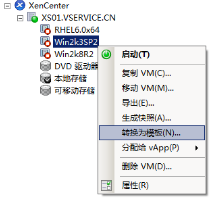一、简介
PostgreSQL 是一种非常复杂的对象-关系型数据库管理系统(ORDBMS),也是目前功能最强大,特性最丰富和最复杂的自由软件数据库系统。有些特性甚至连商业数据库都不具备。这个起源于伯克利(BSD)的数据库研究计划目前已经衍生成一项国际开发项目,并且有非常广泛的用户。
二、系统环境
系统平台:CentOS release 6.5 (Final)
PostgreSQL 版本:PostgreSQL 9.4.3
防火墙已关闭/iptables: Firewall is not running.
SELINUX=disabled
三、源码安装
1. 下载PostgreSQL 源码包
# wget http://ftp.postgresql.org/pub/source/v9.4.3/postgresql-9.4.3.tar.bz2
2. 解压源码包
# tar xjf postgresql-9.4.3.tar.bz2
3. 进入解压后的目录
# cd postgresql-9.4.3
4.安装依赖包
yum -y install gcc*
yum -y install readline-devel
5.增加用户设置密码
[root@postgresql ~]# adduser postgres
[root@postgresql ~]# passwd postgres
Changing password for user postgres.
New password:
BAD PASSWORD: it is too simplistic/systematic
BAD PASSWORD: is too simple
Retype new password:
passwd: all authentication tokens updated successfully.
6.开始编译安装PostgreSQL 数据库。
[root@postgresql ~]# cd postgresql-9.4.3
[root@postgresql postgresql-9.4.3]# ./configure --prefix=/home/postgres/pgsql
[root@postgresql postgresql-9.4.3]# gmake
[root@postgresql postgresql-9.4.3]# gmake install
7.设置环境变量
[root@postgresql ~]# cd /home/postgres/
[root@postgresql postgres]# ls
pgsql
[root@postgresql postgres]# vi .bash_profile
把 PATH=$PATH:$HOME/bin
改成 PATH=$PATH:$HOME/bin:/home/postgres/pgsql/bin
保存退出。
让环境变量生效:
在设置
[root@postgresql ~]# vi .bash_profile
把 PATH=$PATH:$HOME/bin
改成 PATH=$PATH:$HOME/bin:/home/postgres/pgsql/bin
保存退出。
让环境变量生效:
[root@postgresql ~]# source .bash_profile
8.初始化数据库
8.1新建数据目录
[root@postgresql ~]# mkdir /home/postgres/pgsql/data
8.2更改权限
[root@postgresql ~]# chown postgres:postgres /home/postgres/pgsql/data
8.3切换到postgres用户
[root@postgresql ~]# su - postgres
8.4 init db
[postgres@postgresql ~]$ /home/postgres/pgsql/bin/initdb -D /home/postgres/pgsql/data
到这里数据的初始化就完成
9.系统服务
9.1回到root用户
[postgres@postgresql ~]$ exit
9.2复制安装目录下的linux文件到/etc/init.d/
进入postgresql 的安装目录(即刚刚使用tar命令解压的目录)
[root@postgresql ~]# cd postgresql-9.4.3
[root@postgresql postgresql-9.4.3]# cp contrib/start-scripts/linux /etc/init.d/postgresql
9.3修改/etc/init.d/postgresql 注意:红色是修改部分
[root@postgresql postgresql-9.4.3]# vi /etc/init.d/postgresql
#! /bin/sh
# chkconfig: 2345 98 02
# description: PostgreSQL RDBMS
# This is an example of a start/stop script for SysV-style init, such
# as is used on Linux systems. You should edit some of the variables
# and maybe the 'echo' commands.
#
# Place this file at /etc/init.d/postgresql (or
# /etc/rc.d/init.d/postgresql) and make symlinks to
# /etc/rc.d/rc0.d/K02postgresql
# /etc/rc.d/rc1.d/K02postgresql
# /etc/rc.d/rc2.d/K02postgresql
# /etc/rc.d/rc3.d/S98postgresql
# /etc/rc.d/rc4.d/S98postgresql
# /etc/rc.d/rc5.d/S98postgresql
# Or, if you have chkconfig, simply:
# chkconfig --add postgresql
#
# Proper init scripts on Linux systems normally require setting lock
# and pid files under /var/run as well as reacting to network
# settings, so you should treat this with care.
# Original author: Ryan Kirkpatrick <pgsql@rkirkpat.net>
# contrib/start-scripts/linux
## EDIT FROM HERE
# Installation prefix
prefix=/home/postgres /pgsql
# Data directory
PGDATA="/home/postgres/pgsql/data"
# Who to run the postmaster as, usually "postgres". (NOT "root")
PGUSER=postgres
# Where to keep a log file
PGLOG="$PGDATA/serverlog"
# It's often a good idea to protect the postmaster from being killed by the
# OOM killer (which will tend to preferentially kill the postmaster because
# of the way it accounts for shared memory). Setting the OOM_SCORE_ADJ value
# to -1000 will disable OOM kill altogether. If you enable this, you probably
# want to compile PostgreSQL with "-DLINUX_OOM_SCORE_ADJ=0", so that
# individual backends can still be killed by the OOM killer.
#OOM_SCORE_ADJ=-1000
# Older Linux kernels may not have /proc/self/oom_score_adj, but instead
# /proc/self/oom_adj, which works similarly except the disable value is -17.
# For such a system, enable this and compile with "-DLINUX_OOM_ADJ=0".
#OOM_ADJ=-17
## STOP EDITING HERE
# The path that is to be used for the script
PATH=/usr/local/sbin:/usr/local/bin:/sbin:/bin:/usr/sbin:/usr/bin
# What to use to start up the postmaster. (If you want the script to wait
# until the server has started, you could use "pg_ctl start -w" here.
# But without -w, pg_ctl adds no value.)
DAEMON="$prefix/bin/postmaster"
# What to use to shut down the postmaster
PGCTL="$prefix/bin/pg_ctl"
set -e
# Only start if we can find the postmaster.
test -x $DAEMON ||
{
echo "$DAEMON not found"
if [ "$1" = "stop" ]
then exit 0
else exit 5
fi
}
# Parse command line parameters.
case $1 in
start)
echo -n "Starting PostgreSQL: "
test x"$OOM_SCORE_ADJ" != x && echo "$OOM_SCORE_ADJ" > /proc/self/oom_score_adj
test x"$OOM_ADJ" != x && echo "$OOM_ADJ" > /proc/self/oom_adj
su - $PGUSER -c "$DAEMON -D '$PGDATA' &" >>$PGLOG 2>&1
echo "ok"
;;
stop)
echo -n "Stopping PostgreSQL: "
su - $PGUSER -c "$PGCTL stop -D '$PGDATA' -s -m fast"
echo "ok"
;;
restart)
echo -n "Restarting PostgreSQL: "
su - $PGUSER -c "$PGCTL stop -D '$PGDATA' -s -m fast -w"
test x"$OOM_SCORE_ADJ" != x && echo "$OOM_SCORE_ADJ" > /proc/self/oom_score_adj
test x"$OOM_ADJ" != x && echo "$OOM_ADJ" > /proc/self/oom_adj
su - $PGUSER -c "$DAEMON -D '$PGDATA' &" >>$PGLOG 2>&1
echo "ok"
;;
reload)
echo -n "Reload PostgreSQL: "
su - $PGUSER -c "$PGCTL reload -D '$PGDATA' -s"
echo "ok"
;;
status)
su - $PGUSER -c "$PGCTL status -D '$PGDATA'"
;;
*)
# Print help
echo "Usage: $0 {start|stop|restart|reload|status}" 1>&2
exit 1
;;
esac
exit 0
9.4添加执行权限
[root@postgresql postgresql-9.4.3]# chmod +x /etc/init.d/postgresql
9.5启动数据库
[root@postgresql postgresql-9.4.3]# /etc/init.d/postgresql start
Starting PostgreSQL: ok
9.6让数据库开机启动
[root@postgresql postgresql-9.4.3]# chkconfig --add postgresql
[root@postgresql postgresql-9.4.3]# chkconfig postgresql on
9.7创建数据库操作历史记录文件
[root@postgresql postgresql-9.4.3]# touch /home/postgres/pgsql/.pgsql_history
[root@postgresql postgresql-9.4.3]# chown postgres:postgres /home/postgres/pgsql/.pgsql_history
10.测试使用
[root@postgresql postgresql-9.4.3]# su - postgres
[postgres@postgresql ~]$ createdb test
[postgres@postgresql ~]$ psql test
psql (9.4.3)
Type "help" for help.
test=#
源码编译安装成功。














